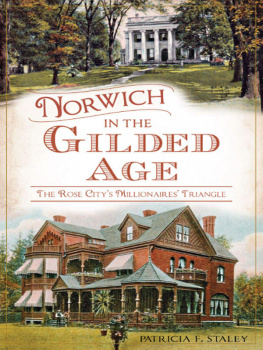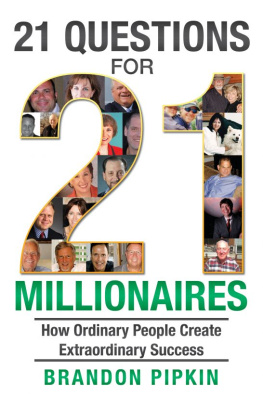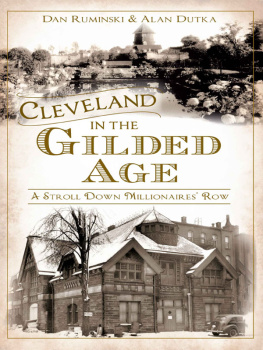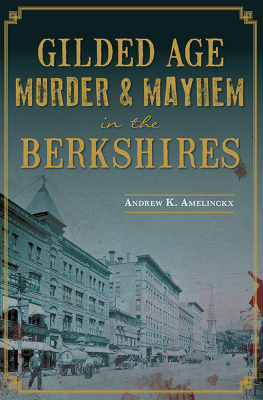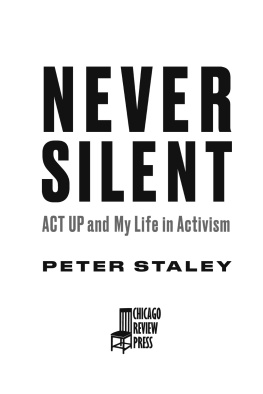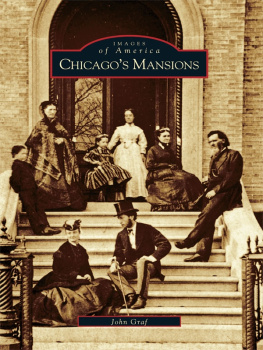
Published by The History Press
Charleston, SC 29403
www.historypress.net
Copyright 2014 by Patricia F. Staley
All rights reserved
First published 2014
e-book edition 2014
ISBN 978.1.62584.725.6
Library of Congress Cataloging-in-Publication Data
Staley, Patricia F.
Norwich in the Gilded Age : the Rose Citys Millionaires Triangle / Patricia F. Staley.
pages cm
Includes bibliographical references and index.
print edition ISBN 978-1-62619-247-8
1. Norwich (Conn.)--History--19th century. 2. Millionaires--Connecticut--Norwich--History--19th century. 3. Millionaires--Connecticut--Norwich--Biography. 4. Norwich (Conn.)--Biography. I. Title.
F104.N93S76 2014
974.6502--dc23
2013047029
Notice: The information in this book is true and complete to the best of our knowledge. It is offered without guarantee on the part of the author or The History Press. The author and The History Press disclaim all liability in connection with the use of this book.
All rights reserved. No part of this book may be reproduced or transmitted in any form whatsoever without prior written permission from the publisher except in the case of brief quotations embodied in critical articles and reviews.
CONTENTS
PREFACE
During the nineteenth century, Norwich, Connecticut, was an extraordinary place for not only its wealth but also the confluence of extraordinary people who lived in the city. For their homes, they gravitated toward a triangle-shaped mile that became the citys most fashionable neighborhood in the last half of the century. Norwich boasted a competitive advantage economically because of its location between New York and Boston and the combination of a short, navigable river with a sheltered harbor and smaller rivers to power factories; a beautiful setting where people wanted to live; an entrepreneurial culture that fostered the creation of local businesses; and a civic culture that prompted local residents to benefit the community by developing infrastructure (steamboat, railroad, etc.) and educational, religious and cultural facilities.
Most of the wealthy families of Norwich were manufacturers, but merchants, bankers, railroad executives and lawyers were also among their number. They had great wealth and used it to benefit the city, building a library, a social service agency, a hospital and a private secondary school that rivaled colleges for the education provided, all of which still serve the city today. They used their own money to establish steamboat lines and railroads (one to New London, one to Worcester) that profited their businesses but also made Norwich a crossroads for travelers and goods moving between New York and Boston.
They were both generous and prompt in financial support as the Civil War began. Connecticuts Governor William A. Buckingham was their Norwich neighbor and friend. When he called for troops, they offered financial support for the soldiers families, many of whom would be losing a breadwinner. The governor himself used his personal credit to ensure that Connecticuts volunteer militia would be well and properly equipped.
Its difficult to think of historical figures as people who had families and lives outside their businesses. Perhaps it is because the history books tend to focus on their achievements and generally dont mention the obstacles they had to overcome and the difficulties they faced in their personal lives.
In Norwich, many of the millionaires residences are still standing, and this project began as a personal mission to match houses with owners and their businesses. My interest was further piqued when I learned that William Slaters wife had lived in the house my family occupied for some years, which wasnt far from the Millionaires Triangle. Ultimately, the mission became to tell and preserve the millionaires stories.
Information for this volume was compiled from a large number of resources, including nineteenth-century maps of Norwich and city directories. Addresses given in the book have two numbers because Washington Street and Broadway were renumbered in 188586. The higher numbers remain valid in the twenty-first century.
Researching the millionaire families required careful checking of birth and death dates for each name. Children were commonly given the name of a parent or close relative. For example, there are three William A. Buckinghams (the governor, his nephew and a grandnephew) and at least four Augusta Greenes (a mother, her daughter and granddaughters in two different families). In addition, family names were almost invariably used as a first or middle name for children. Governor Buckinghams brother was Israel Matson Buckingham, after their mother, Joanna Matson. The governors wife was Eliza Coit Ripley Buckingham; their daughter was Eliza Coit Buckingham, and her children had Buckingham as their middle names. Names and vital records information are available for many of the millionaires children and, in some cases, grandchildren. Please visit Norwich Millionaires Triangle on Facebook for more information.
As I worked on this book, a number of people helped smooth the way and were kind enough to help in my research and share their expertise. Special thanks are due to Vivian Zoe and Barry Wilson at Slater Memorial Museum; the staff at the Otis Library, especially Director Bob Farwell and reference librarian Kathy Wieland; Dianne Brown and Bill Shannon of the Norwich Historical Society; Betsey Barrett, Norwich city clerk; David Oat of the Guns of Norwich; and Paul OConnell and Raymond H. OConnell of Yantic Fire Engine Company No. 1.
I was privileged to meet descendants of some of the millionaires: Dianne Norman, Karen and the late Robert A. Brand, Carol Brand Connor, Joya Hoyt and Pamela Granberry. I am grateful to all of them for sharing family photos, information and stories.
I am especially grateful to Samuel H. Williamson and Lawrence H. Officer, economics professors at the University of IllinoisChicago. Their website, Measuring Worth (http://www.measuringworth.com), proved invaluable in my efforts to grasp the extent of the wealth of Norwichs millionaires. Amounts determined by the Measuring Worth formulas are accompanied by a copyright symbol and are used with permission.
Finally, special thanks to my family for their love, support and endless patience in listening to recitations of newly discovered facts. This books for you.
TRICIA STALEY
Norwich, Connecticut
NORWICH
The Rose of New England
In the center of Norwich, Connecticut, there are two streets lined with large, impressive homes on spacious lots. The streets converge into a single thoroughfare at the apex of a triangle-shaped park. More stately homes line the streets around the park.
Its almost possible to hear the clip-clop of hooves as a smart pair of high-stepping horses draws a carriage along the street, carrying a well-dressed manufacturer and his companion, a visitor from Boston, to the docks, where they will board the overnight steamboat for New York.
The manufacturer salutes a tall, athletic man dressed in black who is striding up Broadway. Thats Colonel Perkins, he remarks to his companion. Hes eighty-five years old and still goes to the office every day. Hes been treasurer of the railroad almost forty years.
Later, as they walk toward the docks, the manufacturer stops to shake the hand of another distinguished-looking man. Senator, good to see you. Are you heading back to Washington? he asks.
Yes, but I have business to attend to in New York before I travel south. The senator smiles, nods and moves off.
The manufacturer remarks, Senator Buckingham was governor of Connecticut during the war. His family runs the Hayward Rubber Company.
Next page
